Gardening: A Fantastic Way to Train Patience, Find Joy, and Relieve Stress
A couple of years ago, I had a sudden urge to try growing some herbs and vegetables. I’ve always been drawn to nature and appreciated the processes involved in growth and balance in plants, but actually growing things myself? This was new… What’s more – there wasn’t even a sliver of land for me to use. I did, however, have an empty balcony. So what did I do? Foregoing lots of research and prep-work, I dove straight into it. I ordered some organic seeds online, bought some organic top soil and organic compost from the local gardening center, got some pots along with that, and I was good to go.
Synchronicity Strikes Again
Little did I know that just about every seed that I planted would sprout… So here I am with about 50 cherry tomato seedlings in left-over egg cartons and I’m stumped. This would require a lot of pots, soil, and space. So I checked for any local Organic groups on Facebook and found someone nearby. A call and a visit later resulted in most of these wonderful seedlings being passed on, leaving a few for myself. Here, however, is where the really cool moment occurred.
The guy looked out of my window and remembered that he knew the person who owns the farm that can be seen across the valley. Actually, he was confusing it with another place very close by, but I now had a phone number and a very, very familiar name… This seedling-donation encounter ended up with me meeting someone I’ve known but hadn't seen since high school, and he had a beautiful plot of land 300 meters down the road! To cut a long story short (this is about how gardening can help YOU, after all), I was given a small patch that he didn’t have time for. I now had good soil to work with!
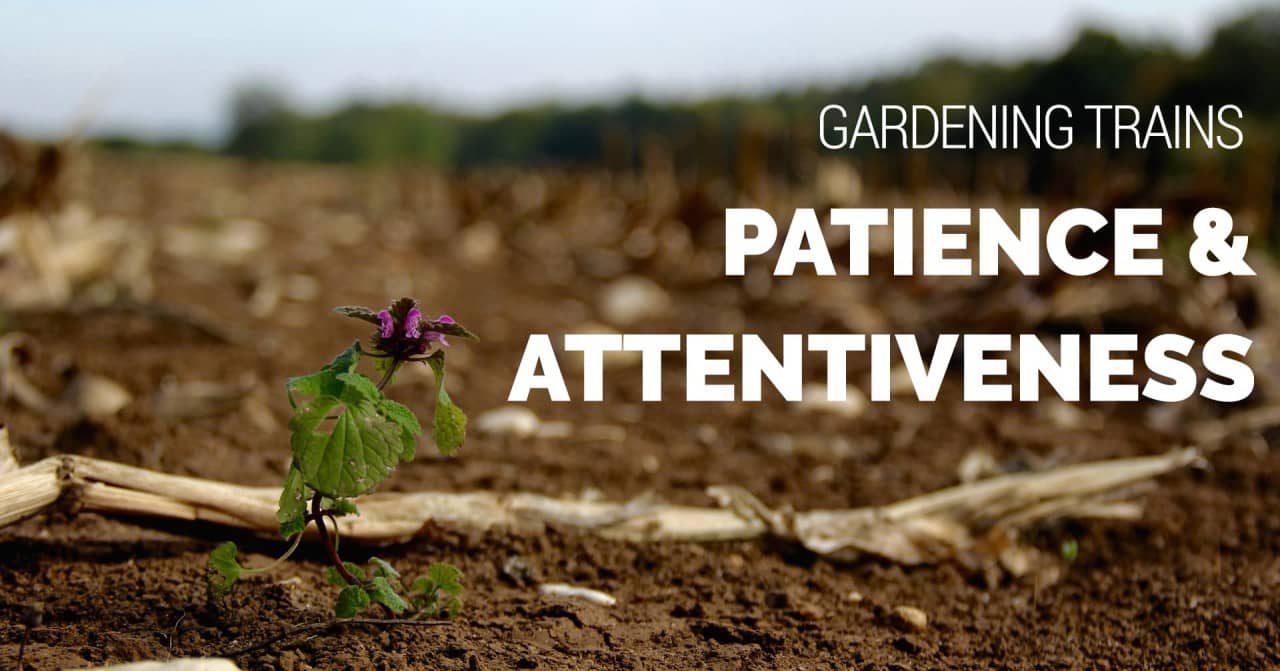
Even though I’ve practiced meditation regularly since I was about 15 years old, my impulsiveness and tendency to be impatient remained subtly steadfast. I wanted good results, quickly – which, admittedly, I often got. When things didn’t immediately go my way, however, I would put on my patient face and give this patience thing my best shot. You can only train patience through… well… being patient, but my progress in this training was slow.
Here’s the thing with growing plants: you can’t force a plant to grow faster and in the few cases where you can, you’re doing it wrong! You have no choice: you HAVE to wait out all the stages that are before you. If you’ve got a grown or soon-to-be-mature plant, then half the battle has already been won for you, but if you’re growing from seed – oh boy!
So gardening is naturally a perfect way to train patience. If you plant a cherry tomato seed, you have to wait until it sprouts. Once the seed is a seedling, you have to wait until it grows a few “real” leaves so that you can transplant it safely. Once you’ve transplanted it, you have to wait until it grows enough to start flowering. Once it’s flowered, you need to wait until the flowers are pollinated (or do it yourself). Once the flowers are pollinated, you have to wait until the fruits grow. Once the fruits are grown, you have to wait until they ripen. And then, only THEN, when the fruits have ripened, can you finally enjoy that which you have waited so long for. If that’s not a crash-course in gratification-delay, I don’t know what is.
Gardening forces you to think long term. What you’re doing now will yield result later. Sometimes much, much later in the case of fruit trees, for example. You have to work, sometimes daily, knowing that the satisfaction will probably only come after a long time.
Here are two of my own examples (apart from the cherry tomatoes above)… I planted cabbage seedlings that I sprouted from seeds in my friend’s patch. At first, they were a bit slow to take, but they are now starting to resemble the final product. Except, they’re not ready yet, are they? Sure, I can cut the occasional leaf here and there – they’re perfectly edible, but it will be a while still until the cabbage that I want to enjoy whole is whole. The more extreme example is the avocado seed that I sprouted (quite easy to do actually). The plant is now 2 foot or so tall, so it looks impressive, beautiful, and I feel quite proud of it, but here’s the thing… Avocados tend not to go to fruit until at least 5 years later when growing from seed. Some varieties, and depending on conditions, can go to fruit only 13 years after planting! Now that’s long term (I’m sprouting more avocados already by the way).
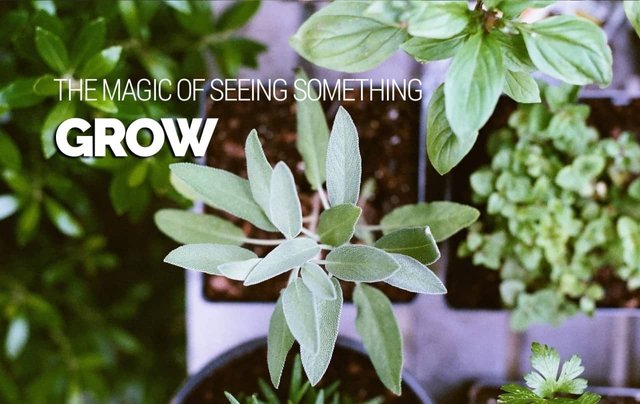
Trained patience isn’t the only reward though. There is something magical about witnessing how some unassuming bit of soil with a seed in it one day transforms into a seedling poking out full of hope the following day. You were responsible for this little miracle. Caring for young plants as well as witnessing the processes of floral life and how they react to temperature, wind, rain, sun, and seasons in general brings with it a certain kind of joy and satisfaction of being connected to nature’s ebb and flow.
Besides, once you’ve got the hang of it, which in most cases shouldn’t be a problem at all, you can look forward to supplying yourself with your own fresh herbs, salads, and whatever else you decide to grow! Can’t beat that.
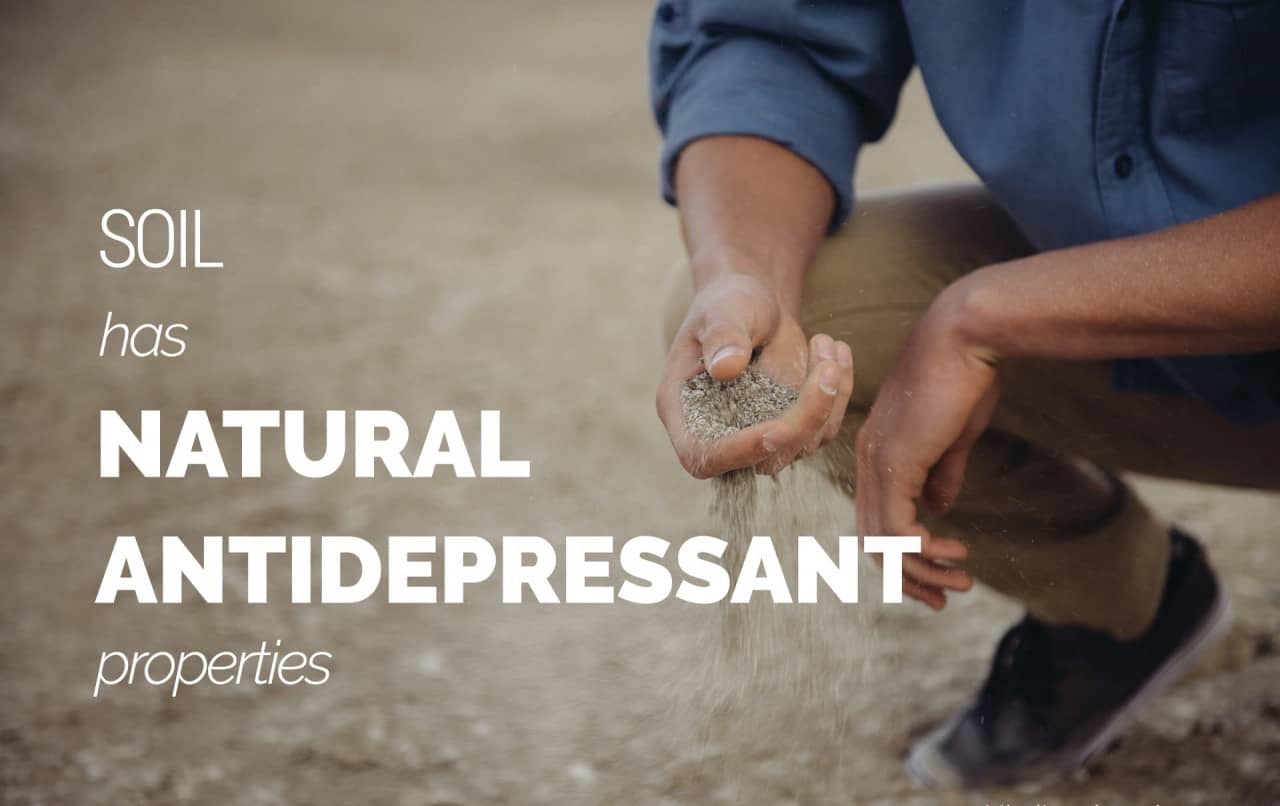
One more thing. If the personality-enhancing traits of gardening and own-grown goodies aren’t enough for you, check this out… Research has shown that soil actually seems to have natural anti-depressant properties! “Friendly” bacteria in soil has been shown to promote the production of serotonin, which is tightly linked to mood regulation and sexual function. From personal experience, I can say that working with soil with my bare hands did indeed have a profound effect at times when I felt down, stressed, or frustrated.
You’re Convinced. Here’s How to Get Started Easily.
OK, so it should be clear now that working in the garden can help you in several ways. You want to get your hands dirty, but where do you start? There are a few possibilities:
Gardening on Your Windowsill
You’d be surprised how much use you can get out of that little bit of space you have under your window. Ideally, the window should be getting several hours of morning sunlight, but as long as it’s not a constantly shaded area, you should be fine. Windowsills are perfect for growing herbs and perhaps the best way to start is with basil. It’s unlikely that you haven’t heard the name, but on the off chance that this is the case (don’t be embarrassed), basil is a very fragrant herb that is often used as a finisher on freshly baked pizzas and in pasta. It’s also the main ingredient of classic green pesto.
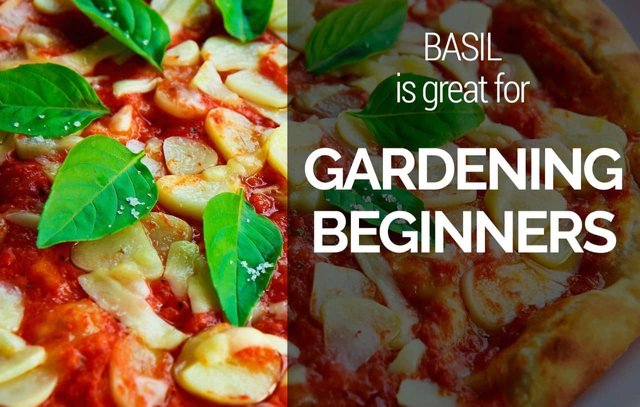
This article isn’t a guide on starting gardening, so I’ll let you find tips online for growing basil from seed. Here’s an example. One thing I’ll say – a lot of guides will be oriented toward starting when winter ends. Indoors you can start in spring time, summer time, and even early autumn. Experiment. Once the plant is large enough to pick regularly, enjoy the leaves immediately after picking with a bit of olive oil on top of mozzarella and/or tomatoes. Yum. PRO TIP: Take off an entire section, stem and all, rather than one leaf at a time, leaving two joints (levels) untouched above the soil. This leaves plenty of energy-producing leaves on the plant but stimulates further vigorous growth.
Regarding frequency of watering, it’s hard to give a predictable schedule because of variations in local humidity, sunlight drying the soil, variety of plant, etc. What I will say is this: overwatering is worse than under-watering! The plant can actually get sick and it’s unlikely to recover. When overwater you don’t really know that you’re doing it. When under-watering – you know.
It’s easy to figure out if you need to water your plant. First of all, if it looks wilted (leaves and/or branches are drooping), water it until water drips from the bottom of the pot, let it drain, and you’re set. Second, if it’s not wilted and you’re not sure whether or not to water, stick your finger about an inch or so into the soil. Is the tip of your finger dry or even a bit “dusty”? Water the plant. Otherwise, the soil’s fine for now.
There’s not much hands-in-soil work when growing herbs on the windowsill. You initially work with some soil and then just water and harvest from time to time. To get a semi-regular dose of friendly dirt under your nails, you’ll want to grow some salad greens. Here’s a nice selection from epicurious. Romaine (11) and Looseleaf (14) Lettuce are quite nice to start out with since they’re not too fussy (from my experience) and are ready to harvest relatively quickly (roughly 2 months). For an even quicker seed to harvest crop, go for radishes (3-4 weeks from seed to harvest).
Oh, one other word of warning: don’t overdo it with fertilizer. It’s tempting to think that the more you feed the plant, the better it will grow, but just like with overwatering, it’s very easy to add too much, too often and harm the plant.
Gardening on Your Balcony
This isn’t too much of an upgrade over the windowsill, plus – depending on where you live – you may need to worry about wind, hail, and frost damaging or outright killing your plants. A balcony, however, does give you some extra space to experiment.
You’ll definitely want to try growing some flowers. Calendulas (marigolds) are probably among the easiest to start off with. Added benefits: you can make nice (and healthy!) tea with them and it’s easy to collect and replant the curved, nail-like seeds once the flowers are pollinated and dry.
For something a bit more ‘substantial,’ try cherry tomatoes and bell peppers. Various beans and peas also grow quite quickly, so that’s another option. They don’t need much space and with a little care you’ll have a delicious harvest after a few months. Same tips apply regarding watering and fertilizer usage.
Using A Patch of Land
Here’s where it start to get interesting. The patch of land could be rented, your friends, or your own. As long as the soil hasn’t been bombarded with pesticides and artificial fertilizers, working in open soil will definitely be healthier for you and open up a world of experiences.
Ideas for activities
- Start a small compost heap. Dump leftover veggies, peels, and weeds in there (no meat, fish, or dairy!), mix in a bit of soil and cover it with a plastic sheet or really anything that will insulate the heat. Mix it up again after a couple of months, then wait a few more, and you’ve got some great, natural compost for your soil!
- Gather leaves and twigs for mulching. Spread these in thin piles around the bases of each plant to deter weeds and keep the top soil moist longer in dry spells.
- Design your patch. Create a layout that nicely combines flowers, herbs, and vegetables in shapes, rows, and columns, some enclosing others, etc. If you’re typically not very creative, make an effort here, it will feel very rewarding.
What to try planting:
- Corn
- Parsley
- Garlic (if the garlic you usually buy actually sprouts from time to time, just stick each individual - separated - bit right into the soil; after 5-6 months each clove will yield a whole new bunch).
- Strawberries
- Rucola/salad rocket/arugula (grows quickly, pick frequently.).
- Chard (also grows quickly, leave one or two big leaves so that the plant can keep growing well after picking)
- Sunflowers (beautiful and impressive)
- Spinach
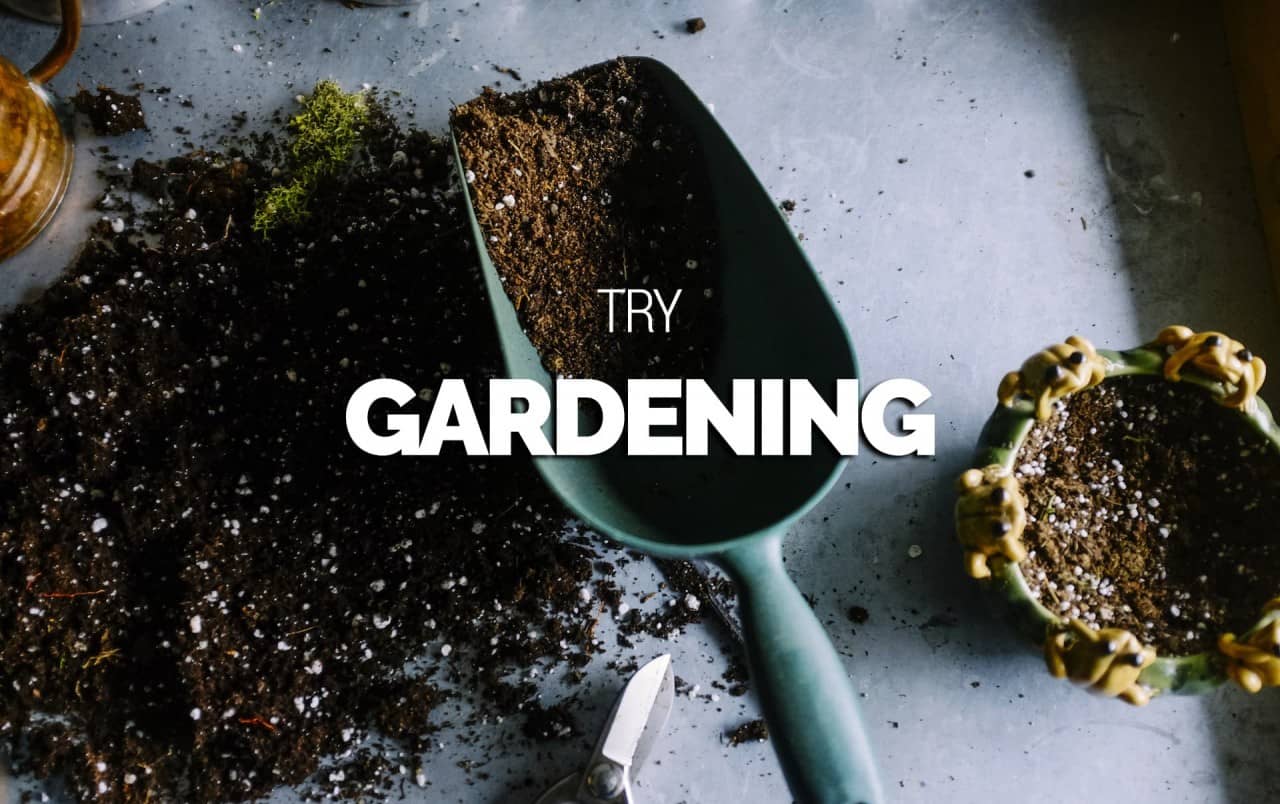
Go For It!
Now, these are just enough tips for you to take the plunge and try your hand at a little bit of gardening. If you want to learn more intricate details, there are of course plenty of resources (and courses) available online, but I can recommend Jackie Clay’s excellent primer.
Ready to get started? You’ll need some seeds! There’s likely a gardening centre near you, but if their selection isn’t what you’re after, here’s what I can suggest in terms of online stores (don't worry, none of these are affiliate links or anything like that). If you’re in the EU, I highly recommend ordering from Reinsaat. They are Demeter-certified, part of several Organic organisations, have a fantastic selection of seeds, and ship really quickly. Ordered multiple times from them, never disappointed. For those in the US, I’ve ordered once from Baker Creek Heirloom Seeds. They aren’t Certified Organic, though they do claim to use natural methods and sources (check out their FAQ) and they get great reviews. For me, the order came quickly and the seeds did well.
Doesn’t matter if you don’t feel like you’ve got a green thumb. Give it a shot and take it step by step. Your mind and body will thank you for it. 😉
Got any questions for starting out in gardening or want to share some of your own experiences?
Upvotes and comments highly appreciated!
This post is marked for 100% power-up.
You may also like
This Morning Routine Gave Me a Massive Quality of Life Boost